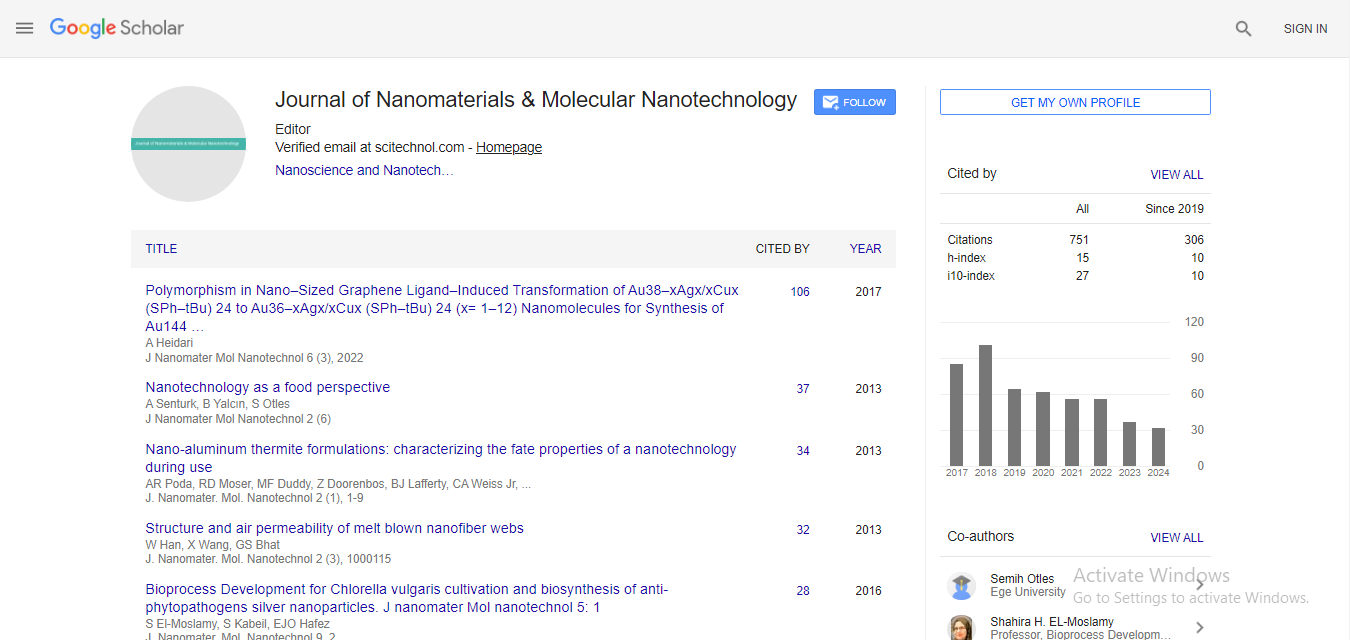Nano probe detection of circulating tumor cells via lactic secretion generated surface electric charges
Donglu Shi
University of Cincinnati, USA
: J Nanomater Mol Nanotechnol
Abstract
Cancer cells may detach from the original tumor and enter the bloodstream, defined as circulating tumor cells (CTCs), and which are believed to be responsible for metastasis. It is therefore critical to investigate CTC mechanisms and develop analytically reliable and clinically viable methods, which can be achieved by novel nanotechnologies. All cancer cells share a hallmark characteristic: high rate of glycolysis. The levels of glucose uptake and lactate secretion by cancer cells can be up to thirty times greater than that of normal cells. The transportation of lactate from cytoplasm will inevitably remove labile cations, such as Na+ and H+, to form lactic salts, generating net negative charges on cell surfaces (Fig. 1). High concentrations of negative charges on cancer cell surfaces are therefore biophysical manifestations of the Warburg effect, presenting a highly distinguishable characteristic from normal cells, regardless of their phenotypical and genetic differences. Systematic investigations have been carried out in our laboratory to illuminate the relationships between the cancer cell surface electrical charge and glycolysis rate in a large number (22) of different cancer cell lines. It is possible, as we have demonstrated, to use the glycolytic-regulated cancer cell surface negative change as the biophysical analysts for CTC detection. Using this approach, direct CTC detection was performed on blood samples, and the findings are highly encouraging. Among different disease groups, we captured CTCs with sensitivities much higher than the previously published results, confirming the validity of the charge-based strategies. Potential applications include detection of circulating tumor cells for early cancer diagnosis and evaluation of medical intervention. Early diagnosis is the key in cancer management. However, few clinical methodologies neither are effective and available, nor are any new concepts readily approved that can revolutionize current diagnostic tools. Therefore, if CTCs could be detected sensitively, timely, and straightforwardly, mortality could be significantly reduced.
Biography
Donglu Shi is currently the Chair of the Materials Science and Engineering program at College of Engineering and Applied Science, University of Cincinnati. His research focuses on nanoscience-based precision medicine, cancer diagnosis and therapeutics, and biomaterials, which involve designs of unique material structures that not only interface with biological systems but also offer new bio-chemical-physical properties at nano-scale for fundamental studies. Donglu Shi has so far published 280 refereed SCI journal publications including Nature, Physical Review Letters, Advanced Materials, and ACS Nano. He is currently the Editor-in-Chief of Nano LIFE, and Associate Editor of Materials Science & Engineering: C, and J. of Nanomaterials.
E-mail: donglu.shi@uc.edu
 Spanish
Spanish  Chinese
Chinese  Russian
Russian  German
German  French
French  Japanese
Japanese  Portuguese
Portuguese  Hindi
Hindi 



